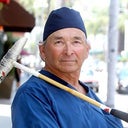Posted underRhinoplasty q&a
1 year after rhinoplasty, I think I have pollybeak. Shall I try Kenalog injection? (Photo)
Dear Docs, there is 1 year since my rhinoplasty. I had an internal one, that included septoplasty as well, and my surgeon used graft to enlarge the breathing channels because before the intervention, while i was breathing, the nostrils used to almost get closed. As you can see, i think i have a pollybeak. The first picture is made now, and the previous (collage) is comparison between 2 weeks and 6 months after surgery. Shall I try Kenalog injection? Any real risks or no chance for no result?
Answers (5)
From board-certified doctors and trusted medical professionals
Dr. Inessa Fishman, MD
Facial Plastic Surgeon, Board Certified in Otolaryngology – Head and Neck Surgery
Answer
More Rhinoplasty Questions
See all Rhinoplasty Q&AWE SEND PRETTY
EMAILS
What’s trending? Who’s turning heads? Which TikTok myths need busting? We’ve got you. No fluff, no gatekeeping—just real talk. Get our free, unfiltered newsletter.


